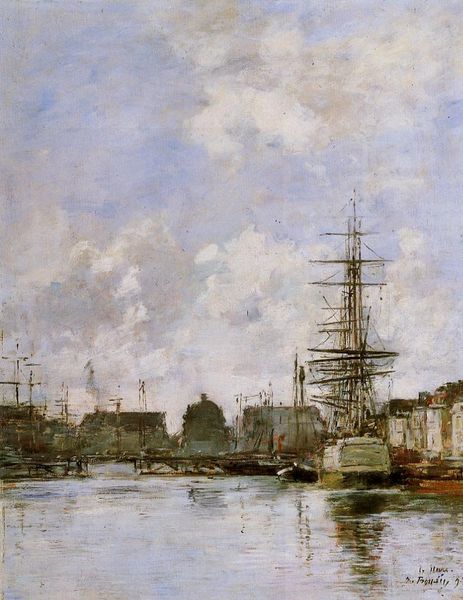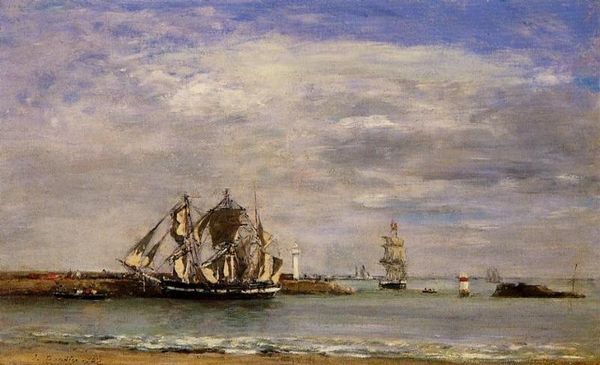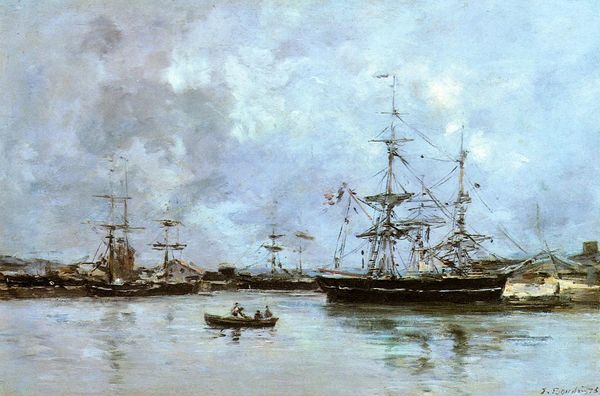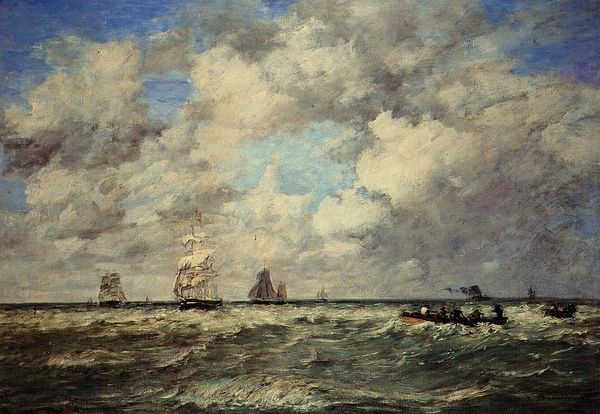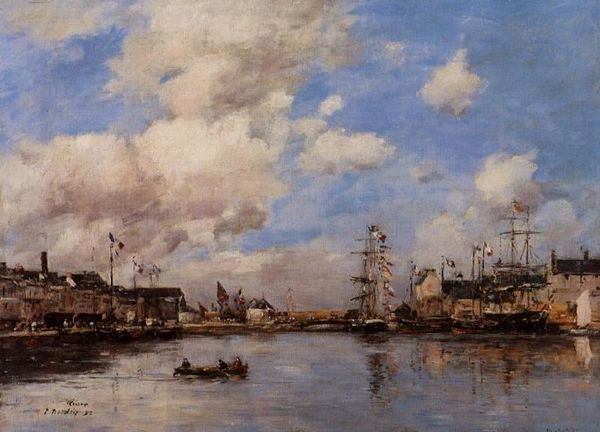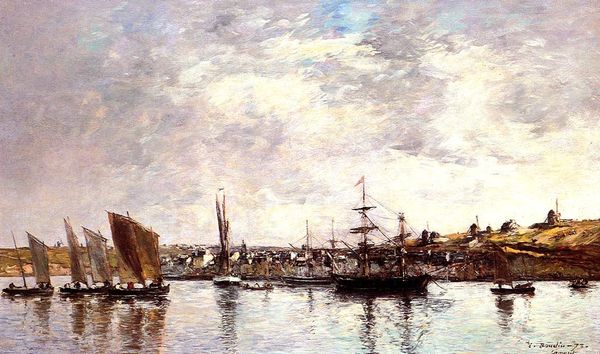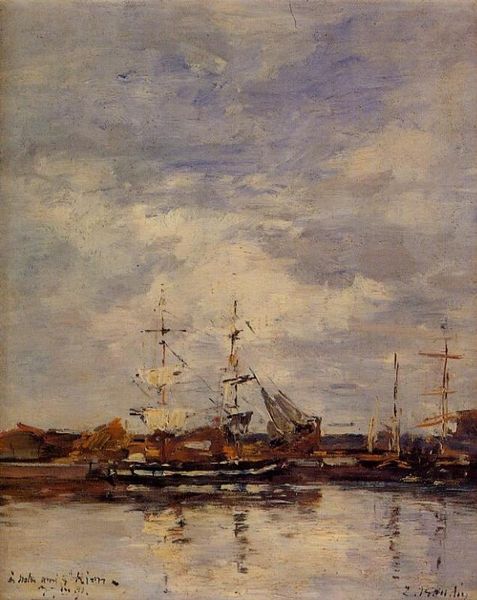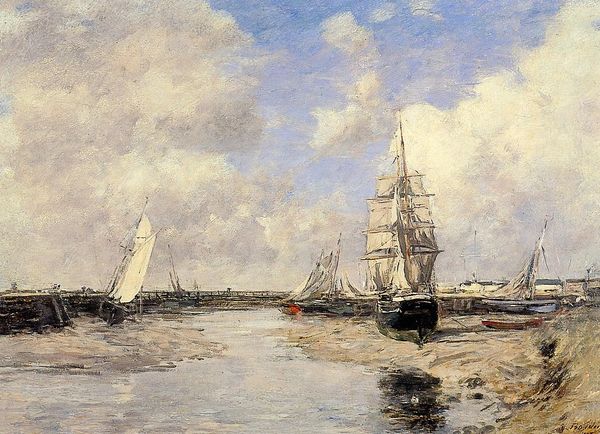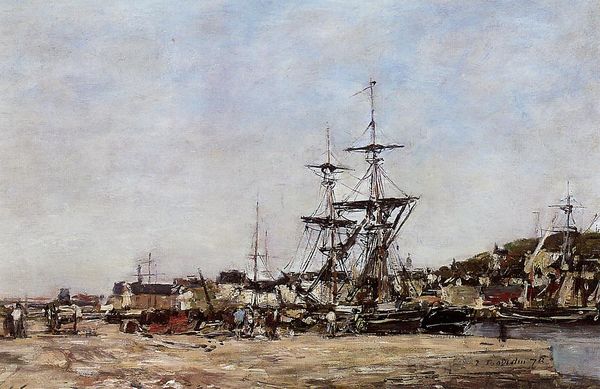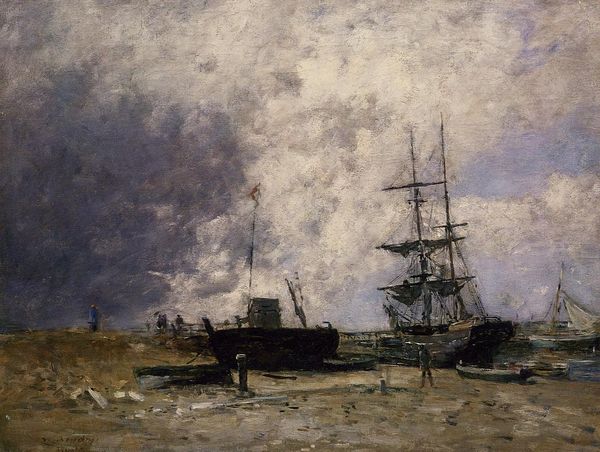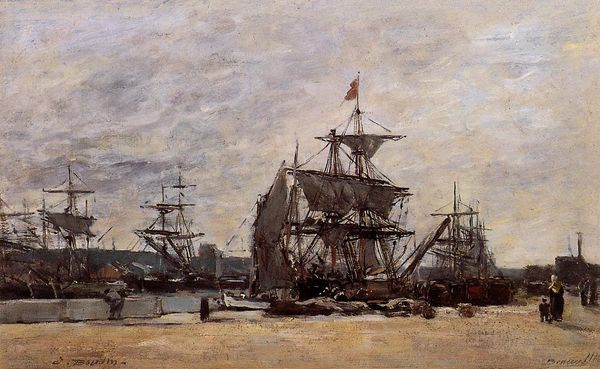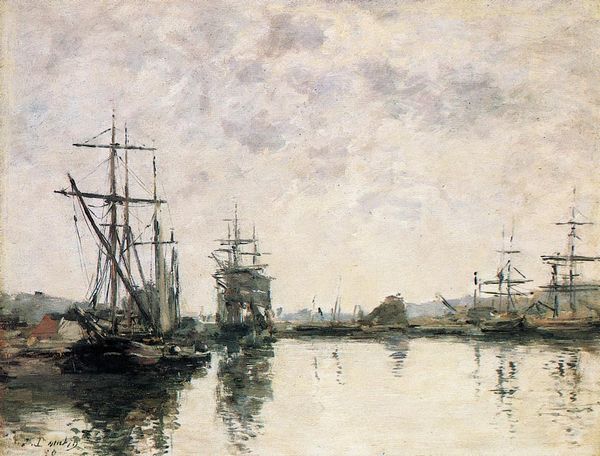
painting, plein-air, oil-paint
#
boat
#
sky
#
ship
#
painting
#
impressionism
#
plein-air
#
oil-paint
#
landscape
#
impressionist landscape
#
oil painting
#
ocean
#
cityscape
#
sea
Copyright: Public domain
Curator: Boudin's "Entrance to Port of Havre," painted in 1864, presents a fascinating view into the socio-economic conditions tied to maritime trade. The hustle of port life, especially in that era, raises questions about labor, capital, and the reach of colonial power. Editor: I’m immediately struck by the energy. The choppy water and turbulent sky practically vibrate with life. It feels like I can almost smell the salt and hear the sounds of the harbor. Curator: Absolutely. The painting not only depicts the literal entry to the port but also, metaphorically, an entry into a world of complex systems. Consider the ships depicted – they were integral to the global movement of resources and unfortunately, in many instances, were entangled with exploitation. The cityscapes in Boudin reflect pivotal transitions tied to mercantile exchange and labor migration during this period. Editor: Right, but look how he captures the light playing on the water, that iridescent shimmer seems more than just technical skill. Ships have such symbolic power; they suggest journeys, exploration, and the lure of the unknown. Even those smaller boats signify transition, connecting the land to the larger vessels. Curator: I agree that there’s more than technique at play here. However, these vessels can be seen as potent symbols of colonial expansion, where gendered notions of adventure masked real systemic issues, particularly regarding wealth distribution and marginalized labor forces. We must acknowledge that the visual appeal often served as a cover for more disturbing elements that drove expansion. Editor: But, don’t you think that symbols always hold layered, complex meanings? The water, for example, appears both welcoming and treacherous. That duality exists irrespective of colonial context, it's about inherent challenges associated with seafaring. This prefigures Impressionism, by the way, showing fleeting impressions more than concrete objects. Curator: You make an important point about inherent symbolic weight. Boudin's commitment to plein-air painting allowed for a more raw rendering that gives viewers a glimpse into maritime networks shaped by capitalist appetites. The choice to depict this port suggests not only observation but engagement. Editor: For me, reflecting on this piece evokes a sense of maritime tradition and transformation. The composition captures a specific time, filtered through the eyes of an artist clearly fascinated by the sea’s power to shape the world. Curator: Seeing it through that lens gives new context into social movements as they challenged power hierarchies—the currents of change captured in artistic and historical understanding.
Comments
No comments
Be the first to comment and join the conversation on the ultimate creative platform.
